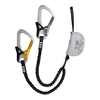Ueli Steck at Courmayeur's Passione Verticale 2016

 1 / 56
1 / 56 archivio Ueli Steck
archivio Ueli Steck
Ueli Steck, one of world’s leading mountaineers, is the star guest this evening at Courmayeur for the third and final appointment with "I Volti”, the faces of alpinism that feature in the town’s Vertical Passion series. Describing the alpinism of this ace Swissman is a difficult, if not impossible, task. And, perhaps, it is too simplistic to merely use the Swiss Machine accolade with which he is known worldwide. What is certain is that the adjective used most frequently to describe his climbs is "incredible", not only in conjunction with the speed records that have become his "trademark".
Steck's is above all a story about an unbridled love for the mountains. A passion for the peaks, in particular the Eiger, that watched him grow. A love that is, more often than not, expressed at breakneck speed. This is not surprising seeing that Steck can bank on an immense, perhaps unique, background: that of his countryman Erhard Loretan, one of the world’s all-time greatest alpinists. Ueli has interpreted that determination and also that speed in his own manner, as can be seen in his achievements on the North Face of the Eiger and his solo ascents up the Heckmair route. In 2007 he surprised everyone by climbing this classic outing in 3 hours 54 minutes (beating the previous record set by Christoph Hainz in 4 hours 30 minutes). In 2008 he "improved" his time, blasting up the face in 2 hours 47 minutes, while in 2015 he sprinted back up and whittled this time down to 2 hours 22 minutes. If one considers that a strong climber takes at least a day, Steck's ascent is certainly verging on the amazing. But this "full speed ahead" certainly isn’t Steck’s main objective. His alpinism is much more than this. And in this context, it’s worth mentioning the 2001 first ascent of The Young Spider, the new Superdiretissima and one of the most difficult routes up the Eiger North Face.
Steck therefore is not only extremely fast, he also happens to be someone who tackles the utmost difficulties head-on. And on closer inspection, it’s clear that he’s always used his speed records as the foundations for his cutting-edge alpinism. Indeed, his aforementioned Eiger records fall into this category, as do the North Face of the Matterhorn (Schmid route in 1 hour 56 minutes in 2009) and the North Face of the Grandes Jorasses (Colton-Macintyre in 2 hours 21 minutes in 2008, and the Ginat route in 2 hours 8 minutes in 2010). All these ascents are the basis and counterpoint for his great climbs in the Himalayas. Often alone, often on virgin mountains and previously untouched faces.
Steck’s Himalayan period began in 2001 with a new route up beautiful Pumori (7161m) together with Ueli Bühler. Then, in 2005, in Nepal’s Khumbu Valley he pulled off the first solo ascents of Cholatse (6440m) and Taboche (6542m). In 2008 he teamed up with Simon Anthamatten to forge their new Checkmate up the virgin north face of Tengkangpoche (6487m) which earned them the Piolet d'Or. While in 2011 he made a solo ascent of Shisha Pangma in a mere 10 hours and 30 minutes. Along the line he also summited six 8000ers, including the giant of giants, Mt. Everest, for which he needed two attempts.
Of all the Himalayan peaks, surely though the frightening and beautiful South Face of Annapurna is "his" mountain, his visionary eightthousander. It's the summit which demanded most of him, the one that fulfilled his dreams the most. In 2007 Steck attempted to solo it via a new route (at that time he had not climbed any 8000er), but he was halted by rockfall that swept him downwards for 300 meters.
Steck returned immediately, in 2008, this time with Simon Anthamatten ... but something particular took place that year, something painful, utterly tremendous. Steck and Anthamatten abandoned their attempt up the South Face before even starting it. They responded to a rescue call by strong Spaniard Iñaki Ochoa de Olza who had fallen ill at 74000 meters. Theirs was a race against time, an incredible but dangerous display of solidarity put on by many climbers and Sherpas, including Denis Urubko. In the end Steck, after untold efforts, was the only one to reach the hapless Spanish mountaineer. But he arrived too late, there was nothing he could do and Iñaki died in his arms. This was a terrible blow, and a unique story of high altitude solidarity.
In 2013 Steck concluded his "impossible" journey by carrying out his absolutely amazing solo ascent of the South Face of Annapurna: 28 hours round trip, to the summit and back. The route had already attempted in 1992 by the talented Frenchmen Jean-Christophe Lafaille and Pierre Beghin, yet their ascent ended in tragedy, with Beghin falling to his death and Lafaille desperately fighting his way back to salvation. Steck's success shook and stunned the entire mountaineering world. The ascent reaped him his second Piolet d'Or. Steck (who had not planned on climbing it alone but only decided for the solo when his climbing partner chose not to continue) stated that his ascent had only been possible thanks to the excellent conditions of the face. An unrepeatable undertaking!
Steck tirelessly continues his journies across the mountains. A journey that in 2015 led him to the summit of all the 82 four-thousanders of the Alps. In search of beauty and, as it happens, in a mere 62 days.



 Copia link
Copia link



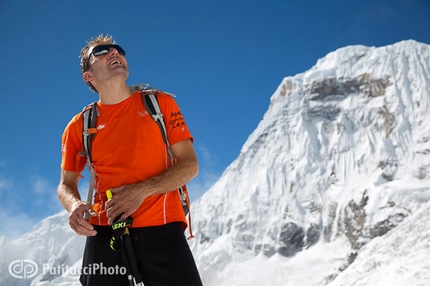


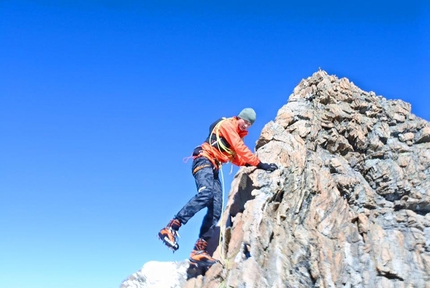






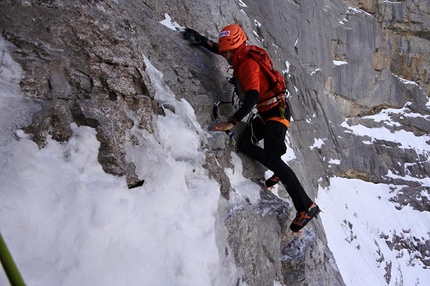

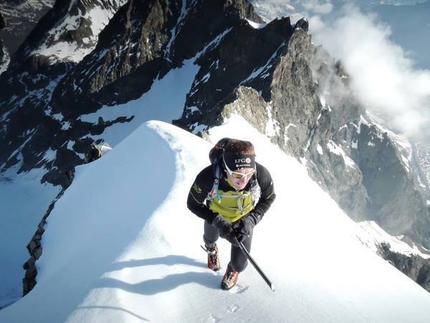
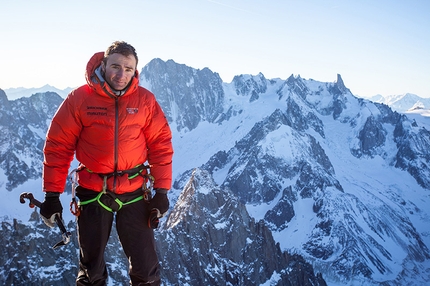


 See all photos
See all photos













